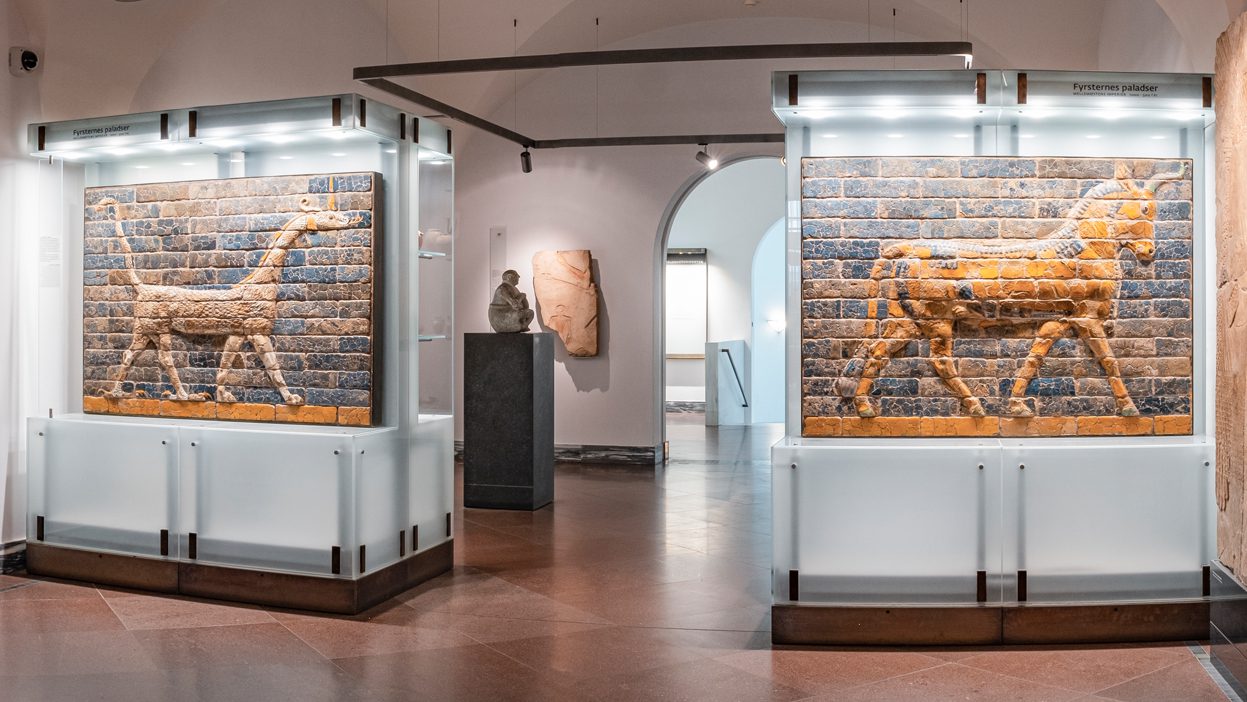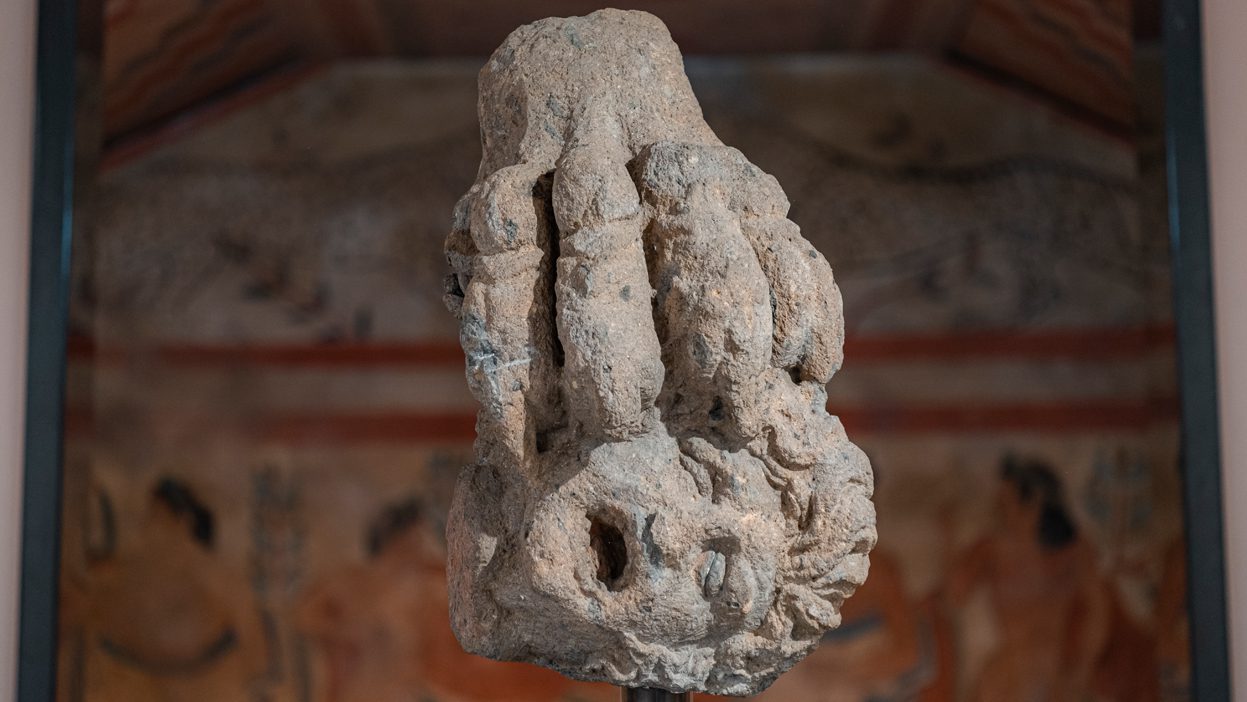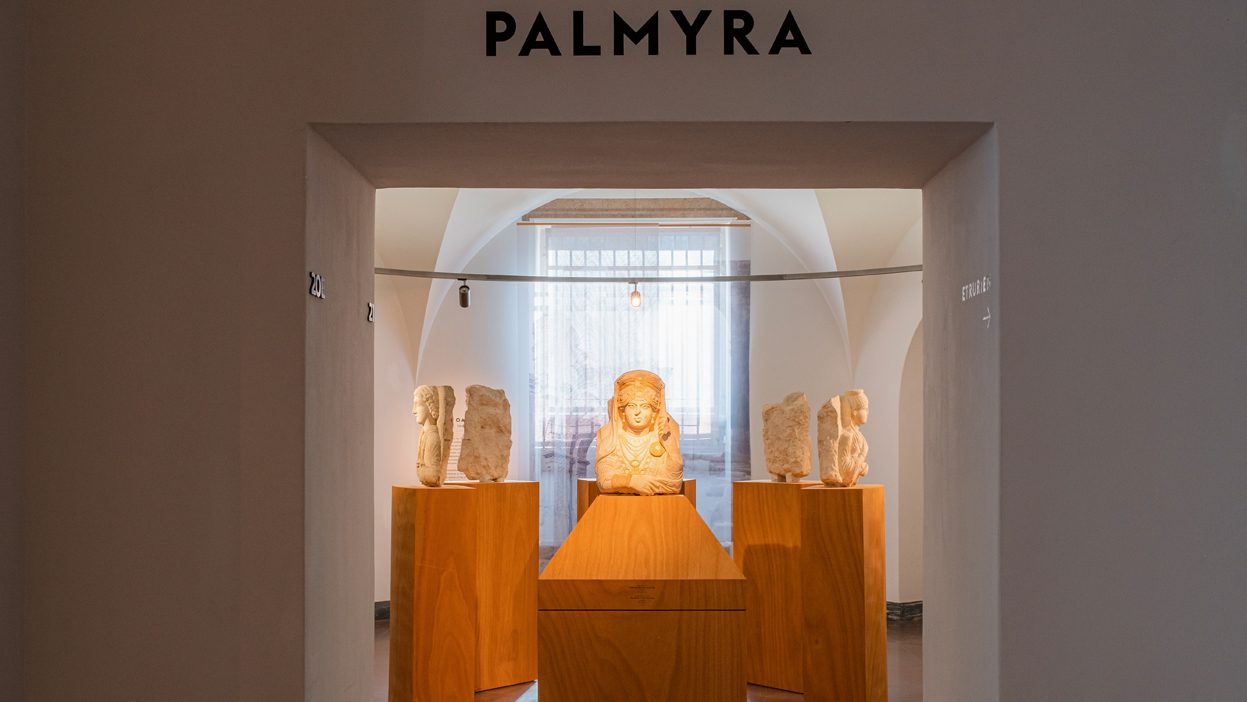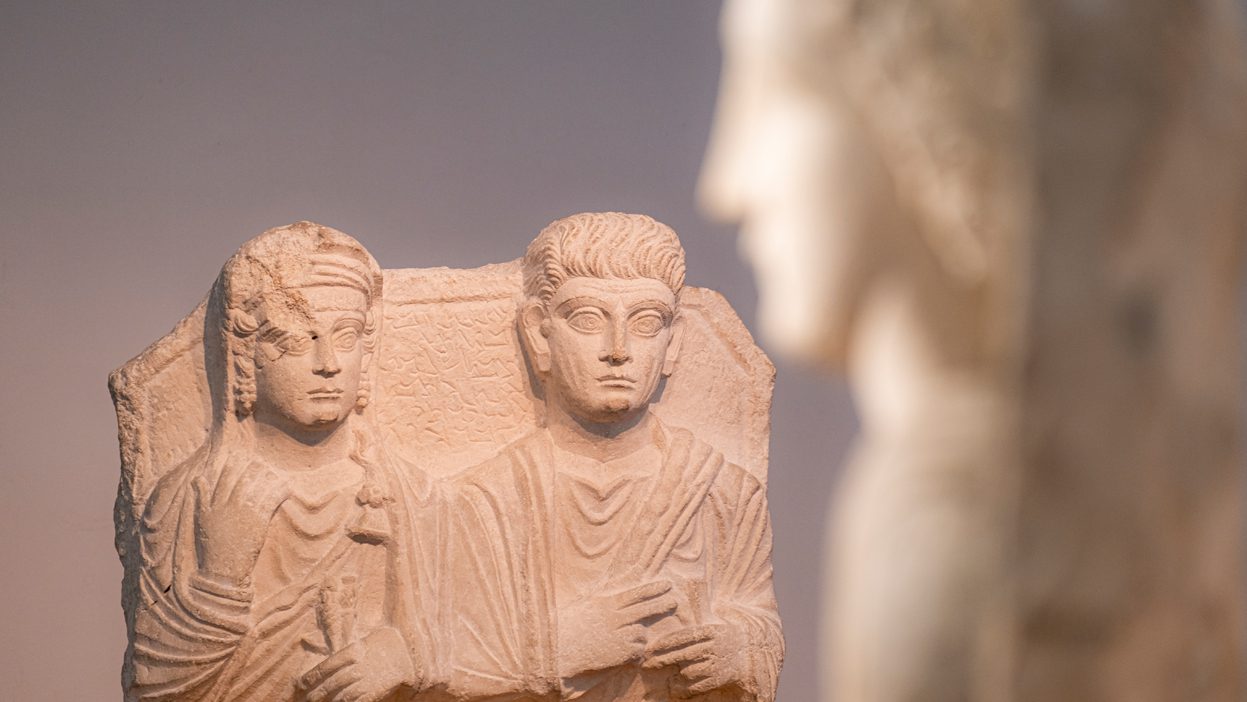Please note that the exhibition ”The Ancient Mediterranean” is closed in preparation for an upcoming exhibition.
The exhibition ”The Ancient Mediterranean” presents a cultural-historical narrative of the cultures of the Mediterranean region. The exhibition is told through more than 1,000 archaeological objects from Glyptoteket’s rich collection of finds from the area. Contact and exchange through trade across the Mediterranean were important factors in the development of societies of the past which form the basis of our own modern world. The exhibition throws light on the extensive exchange of goods and knowledge, religious beliefs and ideologies, which took place with the Mediterranean as a set of highways in the course of more than 6.000 years, – from the early high cultures of the Middle East to the birth of the Roman Empire.
The rise of the Middle Eastern empires
In the first part of the exhibition we meet the earliest ancient cultures of the Middle East. Here we see finds dating as far back as 6,000 BC, which include the earliest images of animals, gods and human beings. These finds illustrate the mileposts in the formation of the great civilizations. Humankind’s earliest representations of higher powers such as the subjugation of nature through the domestication of animals and the emergence of agriculture. The archaeological objects also shed light on the rise of cities and states and mutual exchange of ideas and commodities.
The developing cultures were in mutual contact both in peaceful trade as in war. In time there arose the three great empires of the Middle East: Assyria, Babylonia and Persia. Three large reliefs with representations of animals can be seen in the exhibition. The reliefs come from the monumental Ishtar Gate of the Palace in Babylon. They give some impression of Babylonian civilization’s rich imagery and magnificent architectural ornamentation already flourishing in the 7th and 6th centuries BC.
A world without frontiers
With focus on the great cultures of Antiquity the exhibition tells us of contact and a certain degree of reciprocal acculturation between the Phoenicians – the seafaring trading people from what is now Lebanon – and the Etruscans in Northern Italy, together with Greeks in the Aegean. A wealth of finds, both in the form of applied arts and raw materials for trade, illustrate in the exhibition how even in the remote past the world was global. The finds also show how goods, ideologies, religion and the structure of society throughout the entire Mediterranean world were influenced by intersecting cultural links.
Italy and the Etruscans
Where the exhibition is particularly strong is in the extensive collection of objects from the culture of the Etruscans – one of the many peoples who dominated Northern Italy in Antiquity. Finds, particularly from tombs and shrines, tell a story of religion, rituals and representations of the afterlife and thus provide a close look at the religious aspect of the everyday in Etruria. The exhibition includes sarcophagi with portraits of the deceased and tomb treasures which include elegant table settings which bear witness to the celebratory meals which were held with the dead. Large 1:1 scale copies of wall paintings from Etruscan burial chambers. They were executed in the years 1895-1913 on the initiative of Carl Jacobsen, founder of the museum. The paintings reveal the Etruscans’ own conception of rituals and conduct in connection with burials and the cult of the ancestors.
The final section of the exhibition illustrates how the Etruscans gradually came under the sway of the emerging state of Rome. During this period, from around 500 BC, the flourishing Etruscan culture and its language vanished. But their traditions, ruler symbols and ancestor cult continued to live on under Roman rule.
Calendar
See the exciting activities and events, the Glyptotek has to offer. Please note, the events in Danish will not be presented here. Go to the Danish version of the homepage to see all events.
Café
Enjoy a delicious lunch at Picnic overlooking the Glyptotek's beautiful Winter Garden.
After Nature
Experience a new reading of the Glyptotek’s paintings by the Danish writer Josefine Klougart





